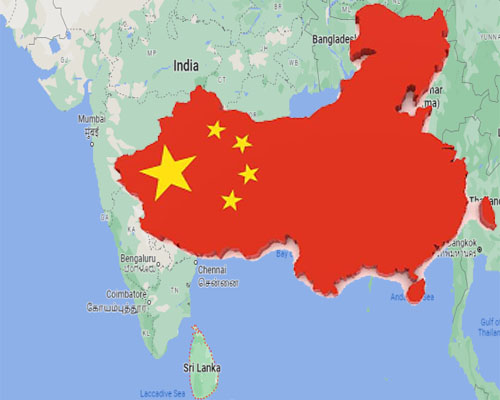While there is a strong move on the part of the US, Japan and Australia to see the Indo-Pacific region as an integral unit, the countries included in the region have different notions of what constitutes their region. They also have different notions of the “national interest.”
Further, the West and its allies see the Indo-Pacific states as being a counter to an unbridled China. But not all States in the region have such a sweeping notion of the region or its relations with China. Sri Lanka for example, is unable to share the US view that it should break off economic and political ties with China. China has been the biggest bilateral investor in Sri Lanka since the end of the 30-year war. Additionally, Lankan governments have been seeing China as a counterpoise to the US and India, which, unlike China, try to influence it on governance issues such as human rights and devolution of power.
Writing in the 2016 volume: Indo-Pacific Maritime Security: Challenges and Cooperation, edited by David Brewster, Nitin Pai, Director of the Takshashila Institution in India, says that since the end of the Cold War, India has scrupulously resisted allowing its engagement with one country to be seen as being directed against another. It has pursued a strategic partnership with Washington since the early 2000s signing significant defence agreements. But at the same time, despite a longstanding border dispute, India has participated in Chinese-led initiatives like the Shanghai Cooperation Organization (SCO) and the Asia Infrastructure Investment Bank (AIIB). And despite an ugly clash on the border, India-China bilateral trade is now worth US$ 115 billion.
As for China, it has taken a hostile line on India both on the border issue and on the issue of cross-border terrorism emanating from Pakistan. This has pushed India into American arms and the acceptance of the concept of the Indo-Pacific.
However, both India and China have avoided a shooting war, as both sides clearly see the economic cost of a 1962-type of flown-blown war. But the Sino-Indian reluctance to go to war is a dampener for US plans or a militarized Indo-Pacific.
Be that as it may, India is preparing to counter China in the East as its “Look East” policy adopted in 1992 envisages maritime linkages with the South East and East Asia markets, across the Straits of Malacca. This entails ensuring maritime security against a possible Chinese challenge.
However, India’s countervailing policy is balanced says Pai. India sees the value of low-cost Chinese financing and technical assistance in accelerating development in the region. But, at the same time, it is also “keen to see that such infrastructure does not end up creating discriminatory rules of access, create political economies that undermine the aspirations of the people of those countries, or indeed create permanent damage to the regional ecosystem.”
On the security front, India is apprehensive about Chinese military facilities being surreptitiously built in its maritime neighbourhood.
Pai says that India would prefer multiple Belts and Roads and not just one Chinese Belt and Road Initiative (BRI). India is itself planning international infrastructure projects and would like Quad to support it. But the US and the rest of Quad see the organization as being essentially security-related.
According to Pai, the lack of a consensus on China in ASEAN is worrying India. Perhaps due to the disunity over China in ASEAN, India is strengthening bilateral ties with individual ASEAN countries.
Writing on ASEAN, Prof.Carlyle A. Thayer of the University of New South Wales asserts that ASEAN, “as an organization” will not take sides in the strategic rivalry between China and the US in the South China Sea.
ASEAN and China signed an agreement in November 2002 that said: “ The Parties undertake to exercise self-restraint in the conduct of activities that would complicate or escalate disputes and affect peace and stability including, among others, refraining from action of inhabiting on the presently uninhabited islands, reefs, shoals, cays, and other features and to handle their differences in a constructive manner.”
Tensions in the South China Sea are a product of the claims and actions by China and the littoral states, namely, the Philippines and Vietnam. Tensions have arisen due to China’s construction of infrastructure on its artificial islands in the Spratlys and an “action-reaction cycle” precipitated by US’s Freedom of Navigation movements and China’s kinetic responses.
Because of the 1992 deal with China, ASEAN will stick to its position that all disputes should be settled without the threat or use of force and on the basis of international law, Thayer says. But this may not suit the US always.
Prof. Thayer argues that “ASEAN’s centrality is important for regional peace and security. It is not in the interests of China or the United States to oppose a unified ASEAN. ASEAN members have reached a consensus on the importance of ASEAN’s centrality in their declaratory policy statements.
China advocates a dual-track approach in the settlement of territorial disputes, Prof.Thayer says. “The first track consists of negotiations between the parties directly concerned, while the second track promotes China and ASEAN jointly managing security in the South China Sea. But in practice, China has not been averse to playing on differences within ASEAN to block any initiative or policy that goes against its interests.”
“Achieving ASEAN centrality is a difficult work-in-progress and this leads individual ASEAN members on occasion to work outside the ASEAN framework when they feel frustrated by ASEAN inaction.”
Therefore, the development of the Indo-Pacific as an identifiable “geopolitical region” is, at best, work-in-progress. It has many obstacles to overcome before it becomes a meaningful entity in geopolitics.





